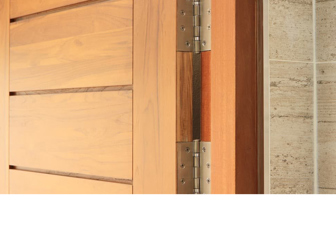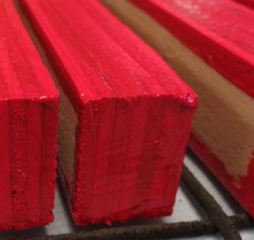Plywood classes explained
We look at the different classes of plywood, class 1, 2 and 3, and explain the differences.
Plywood undergoes strict testing on bonding and durability to prove that it is worthy of usage within the construction industry.
There are 2 standards, known as “harmonised standards”, that work together to determine which plywoods can be used under different conditions:
- EN314-2 (bonding type)
- EN636 (durability & bonding)
These tests then determine the class that plywood can be specified under and what they can be used for.
Elliotts Timber Manager, Bob Tee, explains how these harmonised standards and classes work.
Plywood bonds and specifications
Plywood bonds – EN314-2
Plywoods are produced using resin bonded veneers. The types of bonds used are based on whether the plywood is for use in dry, humid or exterior conditions.
The BS EN314-2 Plywood bonding quality requirements define three classes on the basis of test requirements that the plywood bond must meet:
| Class | For use in |
|---|---|
| Class 1 | Dry conditions - purely for interior, dry uses. |
| Class 2 | Humid conditions - protected external applications and damp internal uses (and must have limited exposure to moisture during construction). |
| Class 3 | Exterior conditions - exposure to weather over sustained periods or continuous exposure to relatively high humidity. |
These classes are determined by laboratory tests in which different plywood samples are subjected to simulated weather conditions. The integrity of the plywood bonds after the tests will determine it’s bond class.
*Please note, all plywood should be fully sealed before exposure to moisture, both internally and externally.
Plywood specifications – EN636
Following on from the EN314-2 tests, plywood panels are required to comply with one of the three performance classes within EN636 for use in construction. This takes into account the quality of the bond and the durability of the timber species used.
The requirements for each class are as follows:
| What are you using the plywood for? | EN | Usage class | Where can this plywood be used? | Where to buy |
|---|---|---|---|---|
| Plywood for use in dry conditions | EN636-1 | Class 1 – This class is appropriate for normal interior conditions. (Urea Formaldehyde) | Warm roofs, intermediate floors, internal timber frame and partition walls. | Available to order - contact your local branch |
| Plywood for use in humid conditions | EN636-2 | Class 2 – This class is appropriate for protected external applications, it is also suitable for interior situations where the service moisture content is raised above the Class 1 level. (Melamine Urea Formaldehyde) | Cold roofs, ground floors and external timber frame walls. | Buy online |
| Plywood for use in exterior conditions | EN636-3 | Class 3 – This class is designed for exposure to weather over sustained periods. (Phenol formaldehyde)** | Fully exposed service conditions. | Contact your local branch |
These classes are determined by laboratory tests in which different plywood panels are subjected to simulated weather conditions.
*Please note, all plywood should be fully sealed before exposure to moisture, both internally and externally.
And don’t forget…
Just like all other timber-based products, it is vitally important that any plywood specified for use in humid and or exterior conditions receives an appropriate protective finish to all faces and edges. This minimises moisture getting into the plywood and reduces the chance of failure.
What is MR and WBP plywood?
MR and WBP plywood are old terms for plywood standards that are no longer used (WBP was phased out in 1995). It is vital to specify and purchase plywood that is suited to job you are using it for, based on the classes in this guide. For example:
- If you have previously specified or purchased WBP (weather and boil-proof) or Exterior quality plywood for construction purposes, you should now purchase plywood to comply with EN314/2, Class 3.
- If you’re looking to purchase moisture resistant plywood, today you would be purchasing a Class 2 plywood.
Both Class 2 and Class 3 plywood are available to purchase from our branches.
Plywood class FAQs
We sat Bob down with a list of your most asked questions about plywood and its uses:
Can plywood get wet?
“Moisture will have marked effect on the performance of a plywood panel.
“Timber expands and contracts with direct or indirect moisture, and that mechanical effect will be the main cause of plywood failure. Therefore, we recommend any plywood used in an external application has the edges sealed.”
Can plywood be used outside?
"Yes, but as above, all edges must be sealed before use with a plywood edge sealant. Note that timber species will also effect the performance in terms of glue bond, visual quality and overall performance.”
What are the differences between softwood, hardwood and marine plywood?
“Great question! The difference between the softwood, hardwood and marine plywood is more effected by where it’s being used and how it’s being used.
“Marine plywood is glued with a Phenol Formaldehyde to EN314/2 Class 3, which is exactually the same as the glue used in Brazilian pine softwood plywood, for instance. The differences are in the durability of the species, how the plywood is put together and the tolerances used.
Checkout my guide on what each plywood is used for and how to pick the right one for your project.
Where can I buy Class 1/2/3 plywood?
“We stock a wide range of class 2 and 3 plywoods, including hardwood, structural softwood plywood, decorative softwood plywood and high end structural/decorative plywood across all our merchant branches in thicknesses ranging from 3.6mm to 25mm.
“When specifying plywood, please be specific about the class you are using it for.”

Need some more advice on Plywood?
It’s important that you get the right plywood for your project, and we know it can be a bit of a minefield. Bob and our timber team have pulled together this handy guide to choosing the right plywood for your project. If you need some further help, our branch teams will be able to help guide you in the right direction.
Contact your local Elliotts branch


